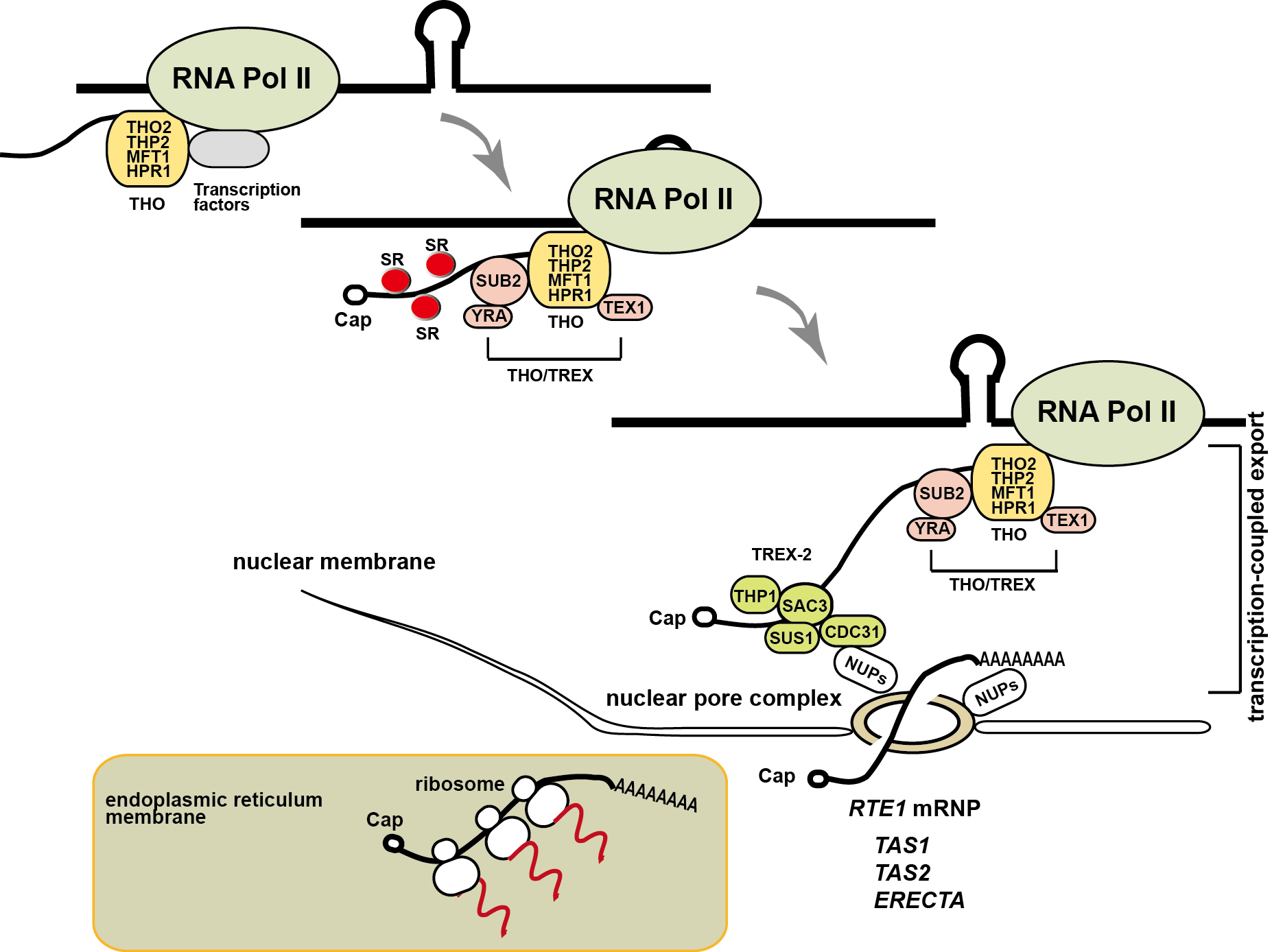Perception of Gaseous Ripening Signal--RNA Transcription/Export THO/TREX Complex Plays a Role
The messenger RNAs (mRNAs) are transcribed in the nucleus and exported through the nuclear pore complex to the cytoplasm for translation into proteins. The coupling of mRNA transcription, splicing and export involves various dynamic activities that are highly coordinated, with the THO/TREX complex playing important roles.
The lab led by Dr. Chi-Kuang Wen, Institute of Plant Physiology and Ecology, Shanghai Institutes for Biological Sciences, focuses on the signal transduction of ethylene, a gaseous plant hormone involved in various biological processes including fruit ripening. REVERSION-TO-ETHYLENE INSENSITIVITY1 (RTE1) is a Golgi- and endoplasmic reticulum-associated protein facilitating the ETR1 ethylene receptor signaling. Dr. Wen and his colleagues now revealed that inactivation of HYPER RECOMBINATION1 (HPR1), one of the components in THO/TREX complex, weakens the ethylene receptor signaling by reducing RTE1 expression. Interestingly, while RTE1 transcripts were reduced in hpr1 mutant, other genes in ethylene signaling pathway was not affected.
Wen and his colleagues further showed that HPR1 regulates RTE1 expression at the level of transcriptional elongation. The RTE1 transcript degradation rate in the wild type and hpr1 mutant was identical on treatment with the RNA biosynthesis inhibitor cordycepin; driven by 2 different promoters, the RTE1 transcript levels in hpr1 were reduced to a similar extent. The mutation in the RNA export TREX-2 complex component SAC3B did not affect the RTE1 transcript level.
Although previous studies revealed a role of THO/TREX complex in RNA export, this study suggests a selectivity of THO/TREX complex in regulating gene transcription. “The selective transcriptional control may arise from the gene structure of higher order”, says Dr. Wen. Future studies to address the features of the gene structure may help unravel the underlying mechanisms of the selectivity of THO/TREX complex.
This work was supported by the Minister of Science and Technology and National Natural Science Foundation of China, and has been published by PloS Genetics [11(2): e1004956. doi:10.1371/journal. pgen.1004956].
